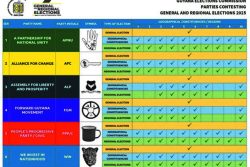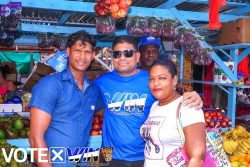Having determined that there is a lucrative international market for cacao, the Dominican Republic (DR) wants to partner with Guyana to grow the crop here, according to that country’s Ambassador Ernesto Torres.
“The DR has presented a proposal to cultivate cacao in Guyana, profiting from the excellent soil and weather conditions,” Torres told Stabroek News in a recent interview.
He explained that one of the most attractive aspects of the proposal is the fact that planting cacao does not imply logging of existing flora, hence complying with the European Union Deforestation Regulation. The government would have to determine which lands would be suitable and make those recommenda-tions, Torres pointed out. “We are waiting for the Guyana government to present the most appropriate area…,” he stated.
Minister of Agriculture Zulfikar Mustapha told the Stabroek News that a team from the DR would be in Guyana this week and the cacao proposal would be discussed.
The DR’s proposal would be an expansion of what already exists here in terms of growing commercial quantities of the crop.
Two decades ago, a group of 15 wives of cacao farmers formed the Blue Flame Women’s Group in the Mabaruma/ Hosororo Organic Cocoa Growers Asso-ciation, with the aim of utilising the cocoa beans produced by their husbands, and they began producing cacao sticks.
The women had seized the opportunity after the association stopped exporting to the United Kingdom. Exporting to the UK had been made possible following a visit to Mabaruma by then Prince Charles, who had organised the organic certification for the association from the UK-based Soil Association Certification Ltd.
Chair of Blue Flame Christine James had told the Stabroek News then that the group had begun buying the beans from the association after the exports stopped as a consequence of a production shortfall. Stabroek News understands, however, that in addition to the shortfall in production, the financing of the certification was also a concern.
By 2007, the group was down to 10 women and they continued producing the cacao sticks as they were appreciative of the income the product brought. Initially, they had begun buying 50-100 pounds of dry cocoa beans which they manually processed, roasting them on an open fire using firewood before shelling and grinding them using a hand mill.
Seventeen years ago Blue Flame used to purchase a large portion of the beans produced by the association. Back then, there were two crops per year; in March-April and November, and beans were produced in between crops as well. The cocoa plantation that the group sourced the beans from comprised some 76 acres of which 20 acres were old or mature trees and the remaining 46 acres young trees. It had recorded producing some 2,000 pounds of dry beans and 2 tonnes of wet beans. However, to export to the UK, the association had to produce 10-25 tonnes of cocoa beans.
The association’s chairman Edward James had stated that once the young cocoa trees began producing to capacity by 2011, they would have been able to meet the target of at least 10 tonnes per year.
Apart from Blue Flame, the association also sold the dry beans to middlemen for $120 per pound in 2007.
In 2020, Blue Flame took a hit as the economic effects of the Covid-19 lockdown ravaged an enterprise well-known for the mark that it has left on the country’s agro-processing sector. Over-night, the entity watched its earnings slump from around $300,000 per month to nothing. It is important to note that the cost per pound of cacao was $155, increasing by only $35 over the 13-year period.
In 2022, local chocolatier Andrew Campbell, seeing a demand for chocolate and cacao beans, had enacted a plan to help local cocoa farmers. Ever since getting into chocolate making, one of his concerns was getting an adequate supply of cocoa beans throughout the year, and with the help of friends he started a seedling project which yielded some 1,000 seedlings, of which 400 were distributed to various farmers in the early phase, free of cost. “My model is for everyone to benefit. It’s about building generational wealth for communities by encouraging individual farmers. In the long run I will definitely benefit,” he had told this newspaper.
From that time, he continued working along with the National Agricultural Research and Extension Institute to identify the varieties of cocoa found locally. “A lot of farmers would reach out to me on social media, mainly Facebook, to request help. I have also made use of social media over the years to garner support for all the initiatives I have done,” he had said
Noting that he sees a push by the government to revive the cocoa industry, Campbell said, “[the] government must acknowledge those of us in our homeland who are doing the groundwork with very little resources and support those of us who need land instead of giving the land to foreigners to develop our idea and control it. We may not have the financial resources but we have the idea and the will to get the work done. I find it offensive that we have to be begging constantly for a little land to do farming.”








